on ‘White Light and Black Shadow’ by Louis Kahn
In today’s world of instant-gratification, hyper-information, and visual-masturbation (especially in the web/blog culture of Architecture and Design), fundamental questions of Architecture are easily passed over… set-aside, even, like an article you seek out of initial interest only to realize it is just too long to read, or too mentally straining to digest at that particular moment and bookmark it for some other time. I am, of course, referring to today’s habitual click-and-peek architecture and its consequential reduction of Architecture to a solely visual product for consumption. When Architecture becomes condensed and reduced to a 1024×1024 image, we must either forget what the essence of Architecture is and fall into a semi-conscious visually-entranced state, or we must probe a bit deeper, asking ‘What is it, to Design?’.
What is Louis Kahn known for?
I propose that in our search for true Design, an attempted rediscovery of more-than-surface-deep Architecture, there is no better place to begin than with a brief revisiting of the words of Louis Kahn, (particularly those found in his text ‘White Light and Black Shadow’) whose writings about Architecture are firm yet poetic, easily graspable yet seemingly forever out of reach.
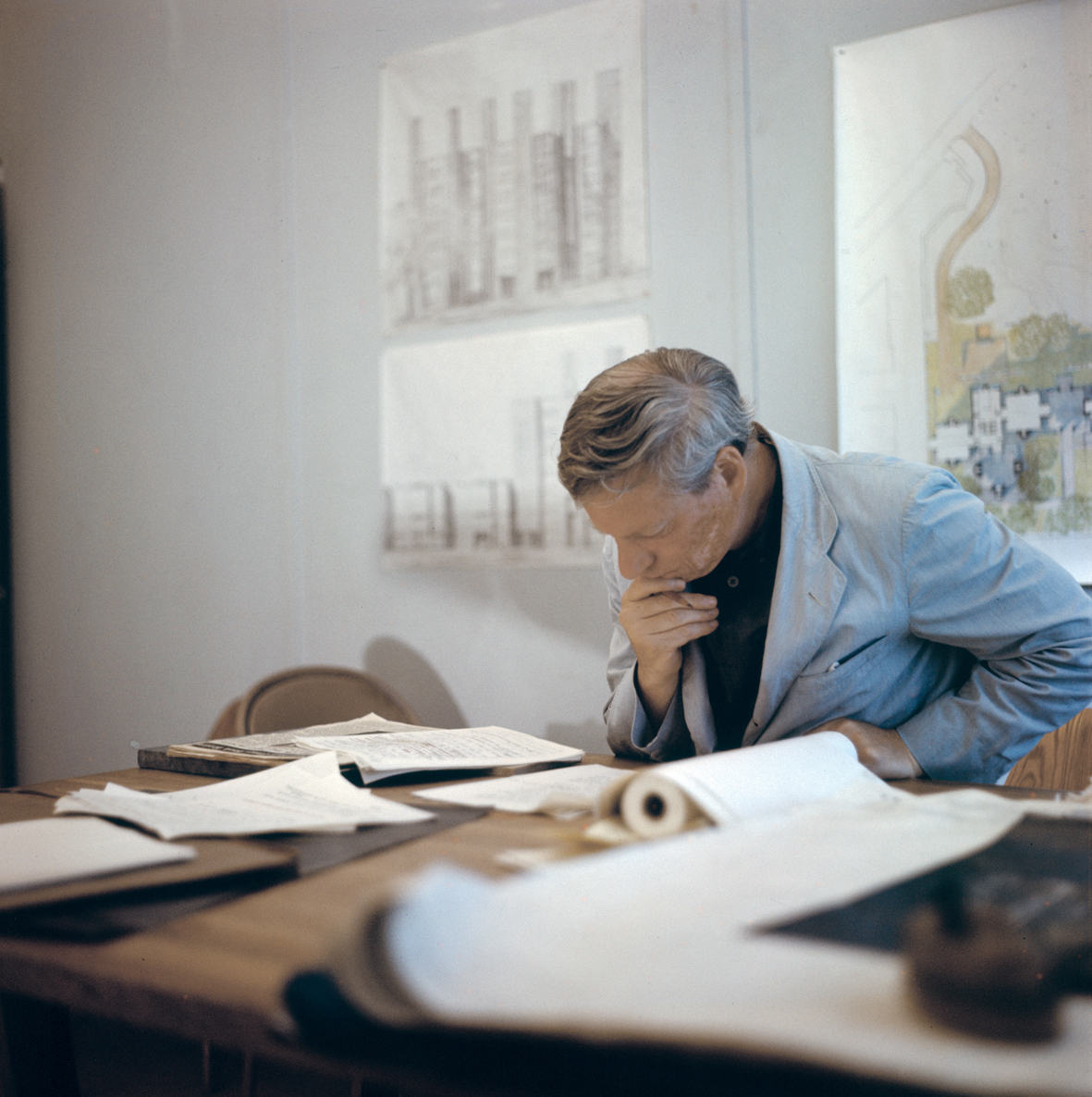
© Architectural Archives of the University of Pennsylvania, Philadelphia
“It fascinates me to answer questions to which I do not know the answer”. For Louis Kahn, as with other great artists of the past and of today, all things lead back to a focal point: the idea of a search, be it for an understanding of things greater than oneself, for that which is unknown, or for a deeper understanding of that which is seemingly known.
What is it, to Design by Louis Kahn?
All paths of inquiry are at once parallel while they may curve and splay in infinitely varied directions – for the poet, the author, the artist, and the Architect are all engaged in the same art – that of drawing out that which is within… By which I mean that: whether a man is engaged in a painting, a drawing, a building, a piece of sculpture, or the problem of composing a musical piece, a work of literature, or even the way he will spend his day, that he does so ‘in art’. It could then be said that through these (be it infinitely varied) artistic expressions we begin to grasp the meaning of life: “to express… to express hate… to express love… to express integrity and ability… all intangible things”.
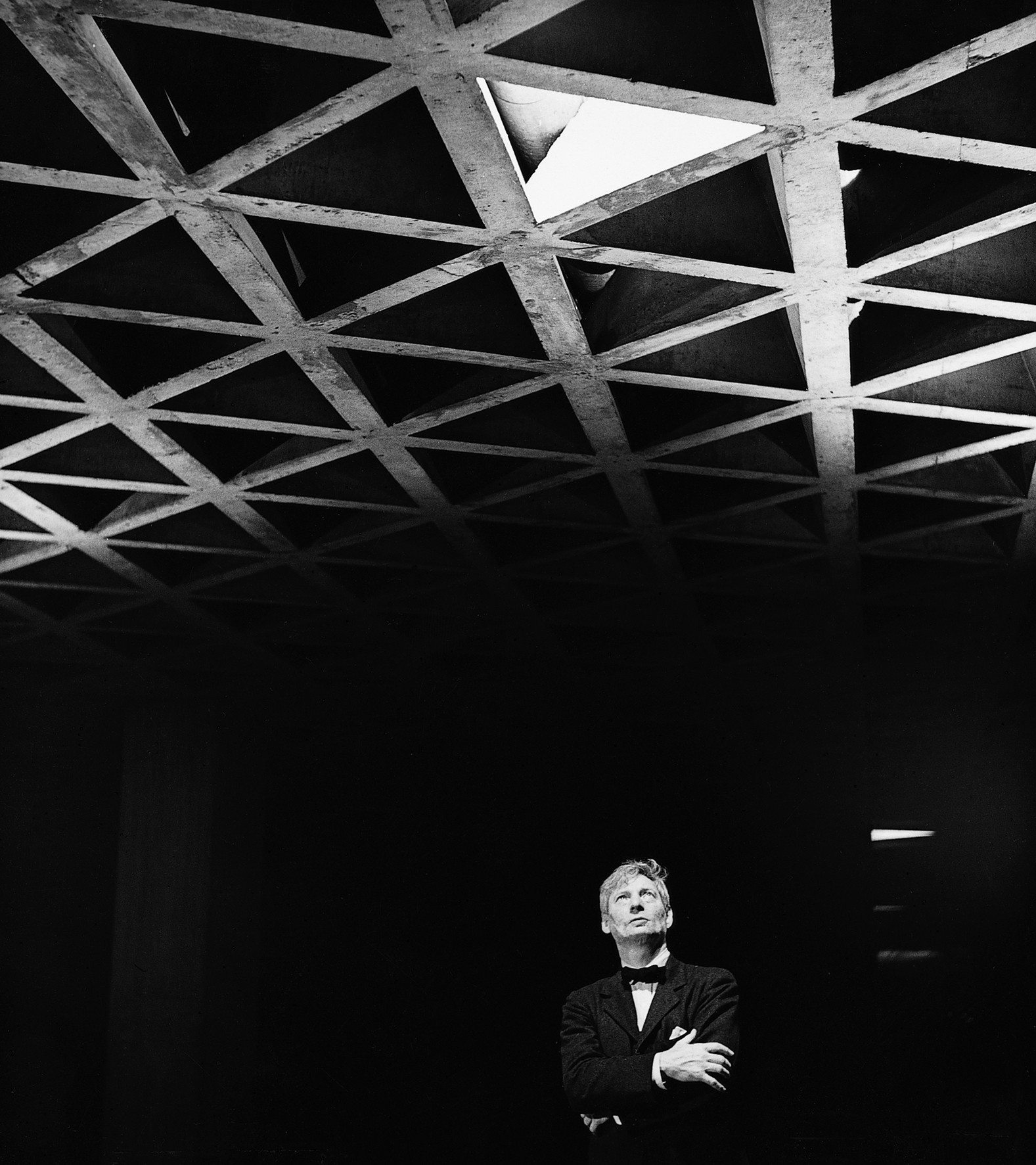
Louis Kahn Looking at His Tetrahedral Ceiling in the Yale University Art Gallery, 1953. Gelatin silver print. Image © Lionel Freedman
Kahn begins to lay out a framework for himself, in which all things lie in his concept of ‘white light’ and ‘black shadow’ –the immeasurable idea, that which is of extreme purity and therefore unattainable in our imperfect world – whereas the ‘yellow sunlight’ and ‘blue shadow’ he mentions (and infinite variations therein) become the measurable result(s) which are positioned within the framework of the over-arching concept of the immeasurable.
To better understand this, we could use the example of a geometry which exists as a pure metaphysical construct, yet when translated into the built world (be it via drawing, building, etc) its purity is lost in translation – the hope is that the resulting ‘yellow sunlight’ is somehow telling of its ‘white light’ nature. In short, for Kahn, the essence of a constructed thing must not be lost when translated from metaphysical/ conceptual construct to the built reality of our everyday world.
I say ‘constructed thing’ and not ‘all things’ due to the dichotomy between that of the man-made and that natural: “Nature does not choose… it simply unravels its laws, and everything is designed by the circumstantial interplay where man chooses. (…) Art involves choice and everything that man does, he does in art”. However, nestled within this dichotomy rests a duality whereby one builds from the other: “In everything nature makes, nature records how it is made. (…) When we are conscious of this, we have a sense of the laws of the universe. Some can reconstruct the laws of the universe from just knowing a single blade of grass”.
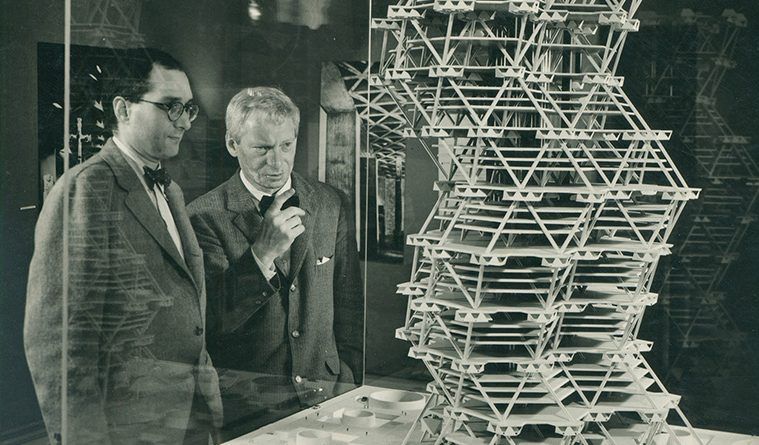
Louis Kahn in front of a model of the City Tower Project in an exhibition at Cornell University, Ithaca, New York, February 1958. © Sue Ann K.
My interpretation of this is that in essence all things we desire and thus pursue through doing are fundamentally tied to and bound up with the innate laws of the universe from which they spawned, yet are diabolically opposed to such laws due to the fact that we as human beings on this earth exercise our own choice in regard to our actions and doings. How then, do we make sense of our apparent freedom as beings which create?
A major recurring theme for Kahn seems to be the ‘realization’ as an extremely critical moment in an individual’s consideration of a certain question or observation of a specific entity.
While speaking on the evolution of, or emergence, of the singular column from the massive wall, Kahn states that “such realizations come out of nothing in nature. They come out of a mysterious kind of sense that man has to express those wonders of the soul which demand expression.” – in short, if a man did not desire the expressive act, the ‘discerning opening’ mentioned in this process of the emerging column would never have come about… man would have stopped at the crude opening in the wall and felt compelled to do nothing more. However, it is through such realizations (stemming as they may from such desires to express) which lead to the uncovering of the nature of, and in turn the order of, a certain thing or idea.
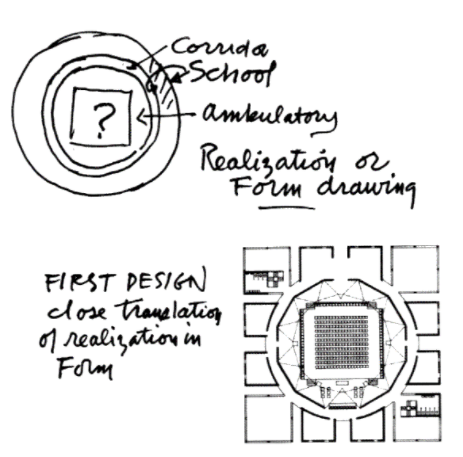
Realization of form drawing and the first design for the First Unitarian Church of Rochester by Louis I. Kahn, 1959-69
Parallel with our desire to express, we as human beings also have an innate desire to learn. Kahn states firmly that “The inspiration to learn comes from the way we live. Through our conscious being, we sense the role of nature that makes us. Our institutions of learning stem from the inspiration to learn, which is a sense of how we were made”. This further reinforces earlier thoughts of having a sense for the laws of the universe while at once embarking on the creative and inquisitive journey – the journey into the unknown in search of understanding of those things that are greater than oneself.
Kahn further speaks of these institutions of man as being of prime importance to all, even going so far as to say that for the architect there is no act of greater importance than to “sense that every building must serve an institution of man”. The idea being, that if the architect is to see a building in such a way – to view it as its pure nature, or ‘white light’ – then the architect can begin to define the programmatic needs and relationships of such an institution.
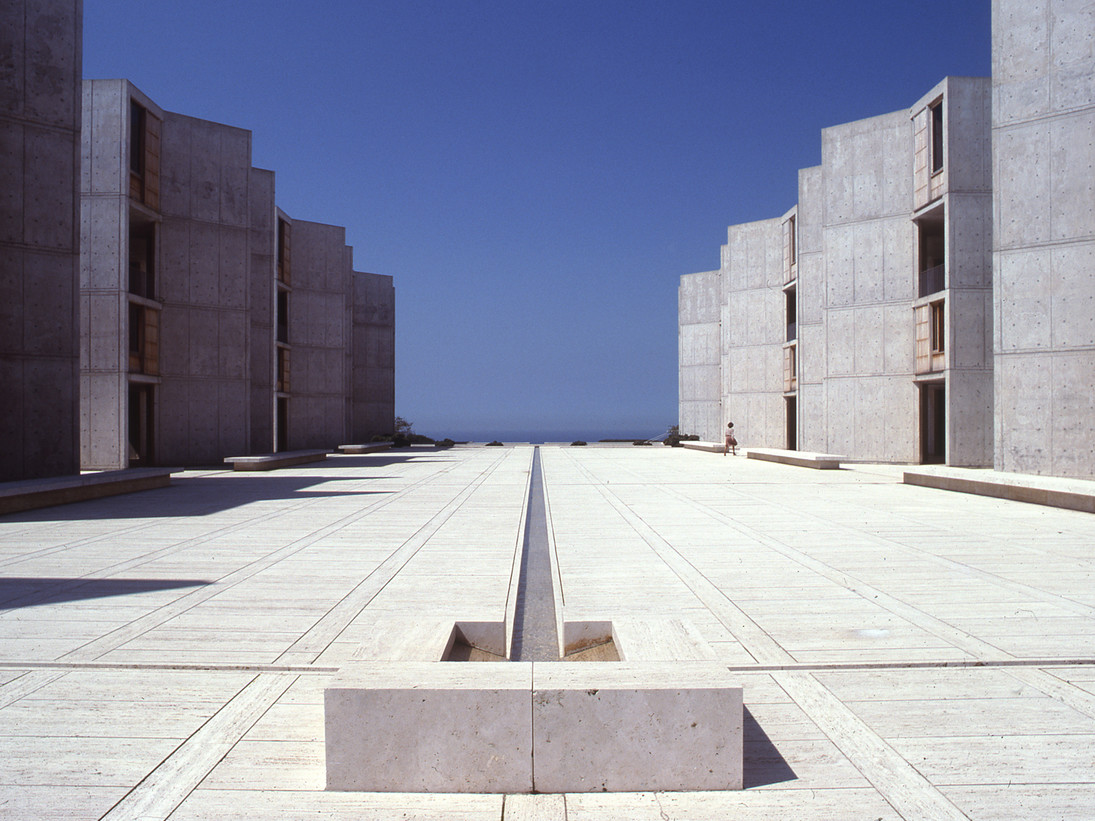
Salk Institute in La Jolla, California, Louis Kahn 1959-65, The Architectural Archives, University of Pennsylvania, Photo John Nicolais
Kahn speaks of several examples where such a mode of thinking is applied openly to specific projects in both an academic setting and a professional one; in particular, the monastery project given to his students in which “what started with just a reconsideration emerged with the power of new beginning in which new discoveries could be made in present-day context”.
Furthermore, Kahn makes the assertion that buildings “must be true to their nature” if they are to “personify… institutions of man” and that “it is this thought which must live if it dies, Architecture is dead”. We can extract from this the notion that a building must be a physical, concrete/’real’ thing that serves a specific function while at once becoming an embodiment of the nature of its intended use, blurring the line between the realm of the ‘white light’ and that of the ‘yellow sunshine’ – a literal “world within a world”.
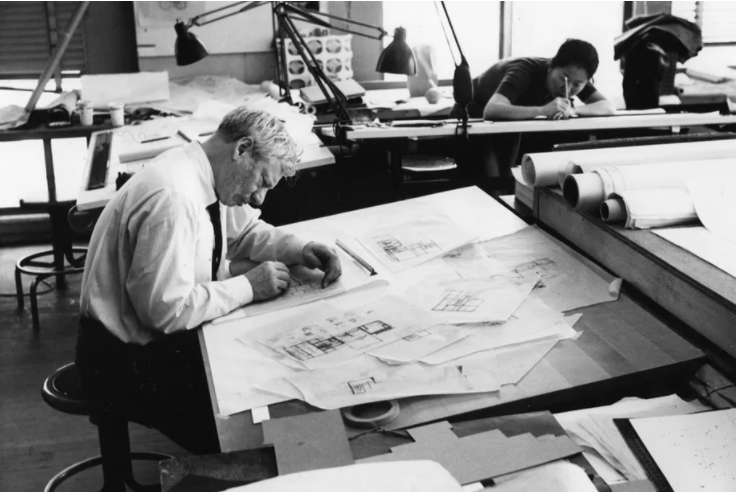
Louis Kahn working on Fisher House design, 1961, Louis I. Kahn Collection, University of Pennsylvania and the Pennsylvania Historical and Museum Commission
The architect then, in the realm of the intangible, speaks the language of the artist – aspiring to grasp (or at least approach) through his artistic works “the language of God”, and that through these artistic expressions he begins to grasp the meaning of life: “to express… to express hate… to express love… to express integrity and ability… all intangible things”.
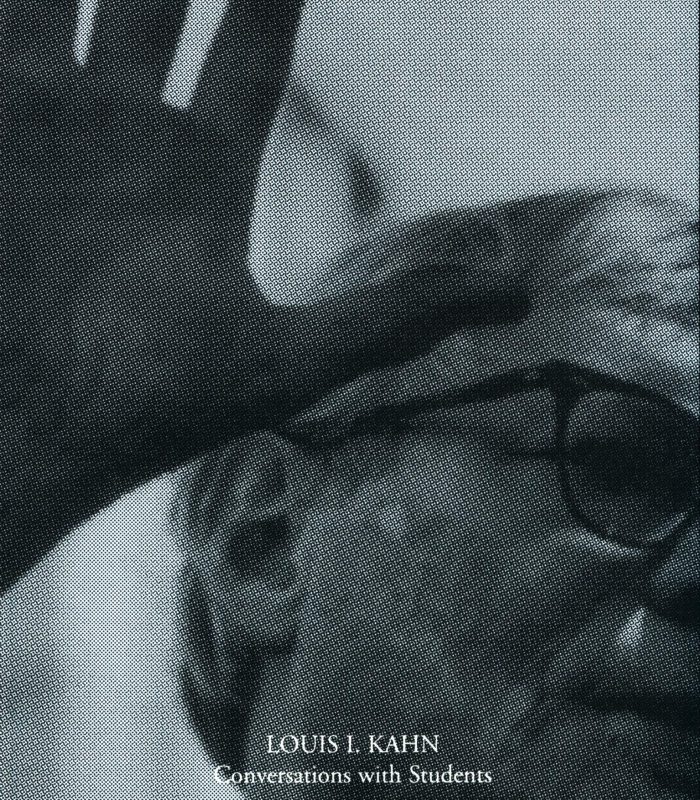
Louis Kahn: Conversations with Students, Princeton Architectural Press, 1998
Poetry, art, Architecture – all are parallel ventures in this regard. It becomes apparent that Design, the act of meaningful creation, is not a mere question of utilitarian need or even of visual stimulation alone, but a manifestation of our deepest desires, realizations, and even dreams as human beings on this earth; while, for Kahn, being simultaneously the indication of the ‘existence will’ of the thing itself that is to be created. The question however becomes: What is it for me, to Design?
The piece quoted and discussed above is entitled ‘White Light and Black Shadow’ by Louis I. Kahn, accessed by myself in ‘Louis Kahn: Conversations with Students. Houston. Princeton Architectural Press, 1969.
By Zack Saunders

